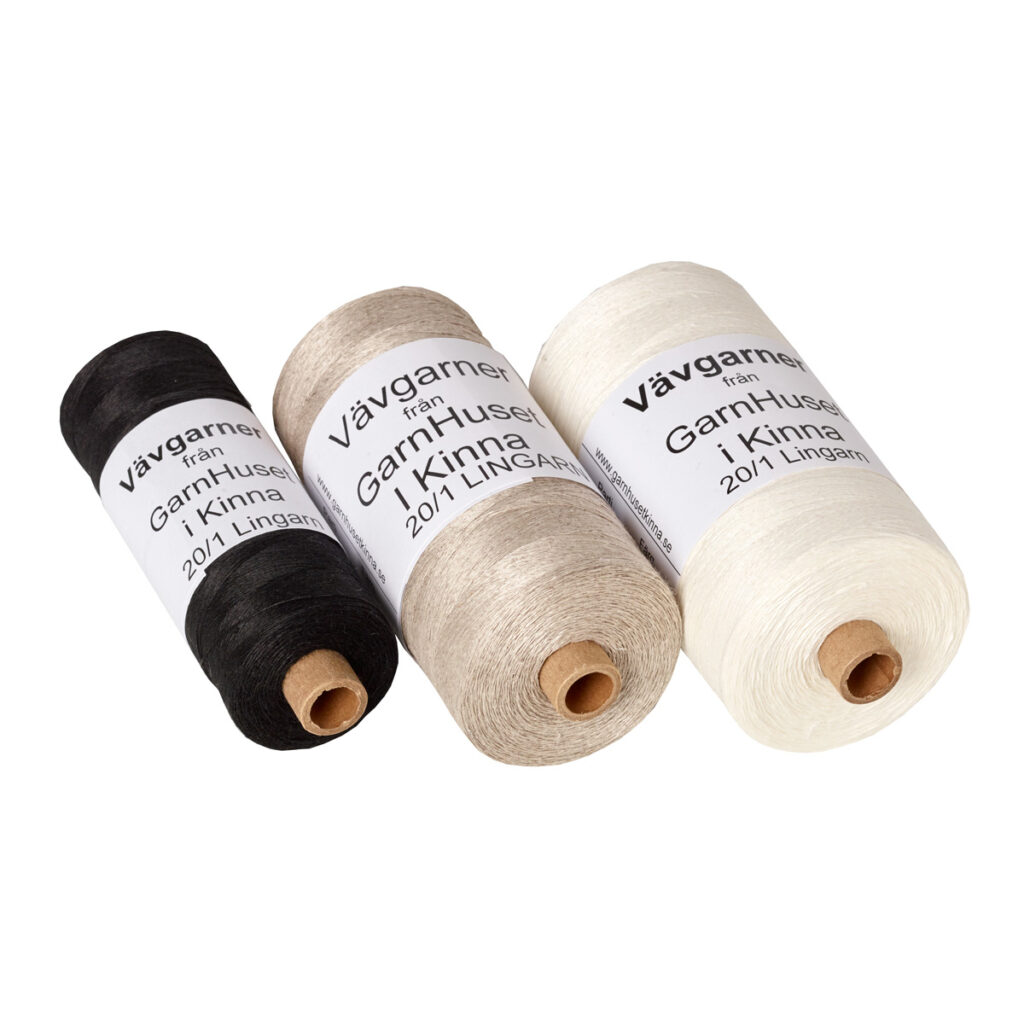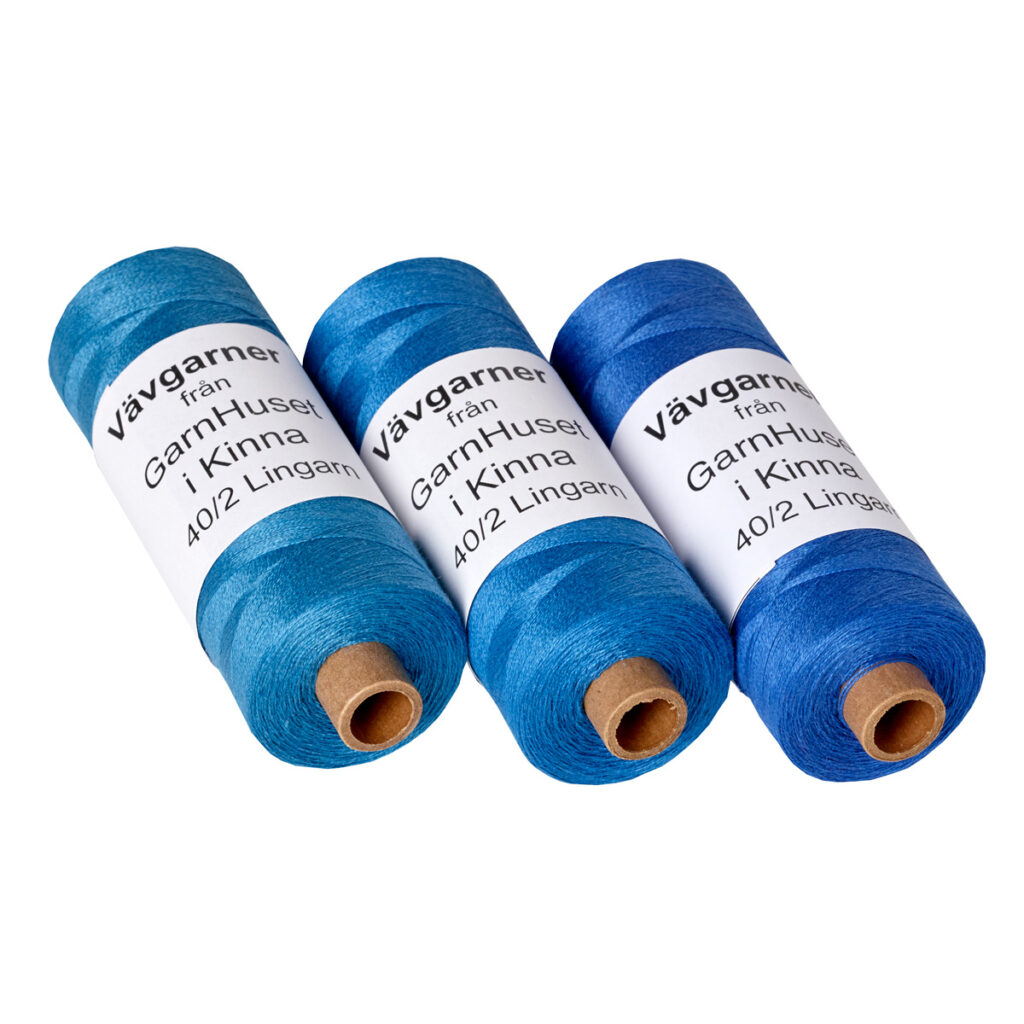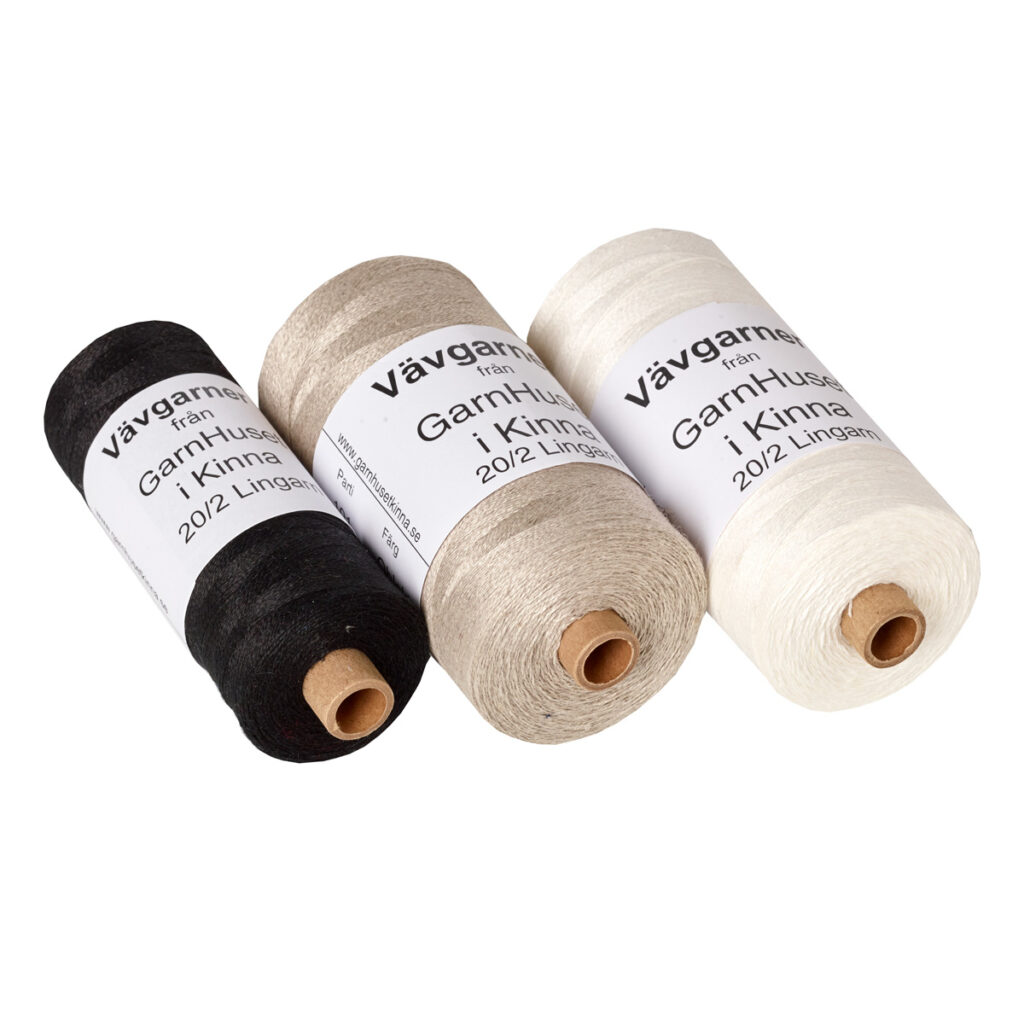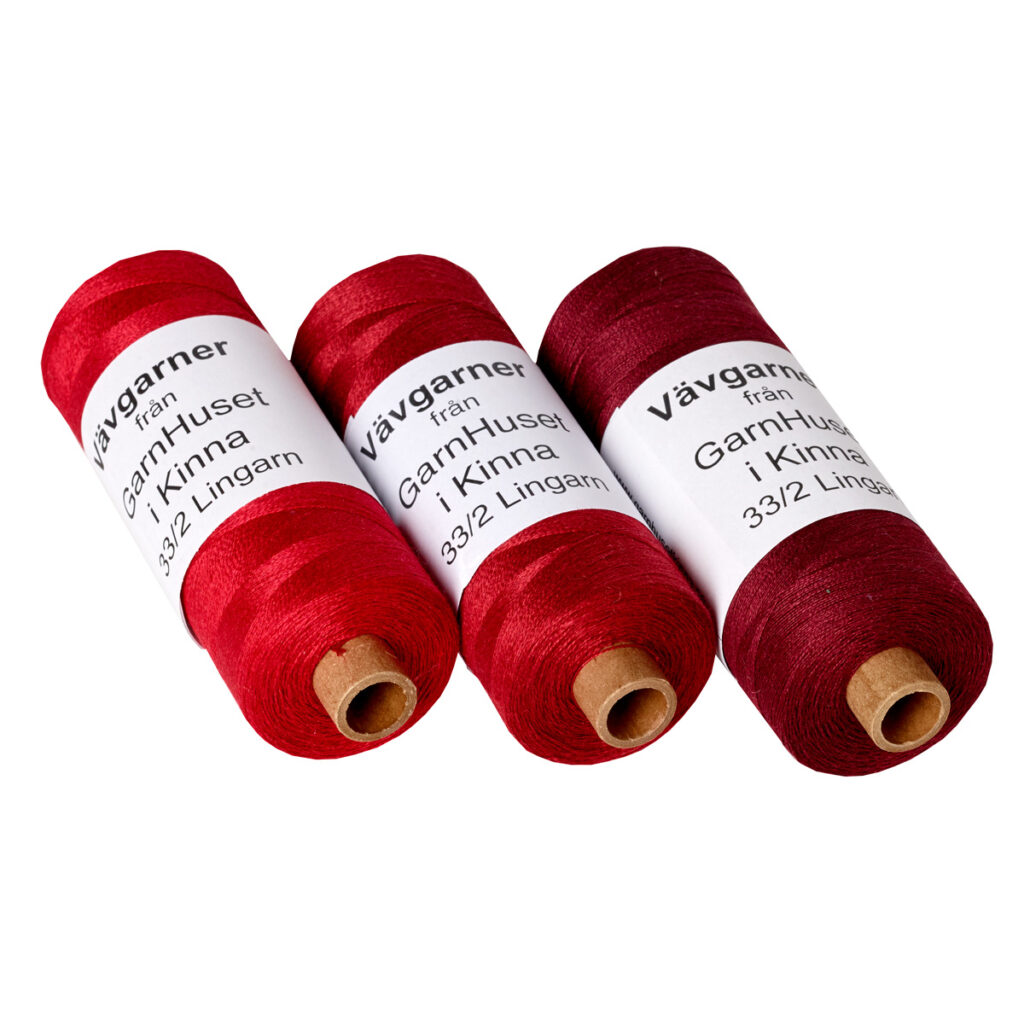Garnhuset fine linen is wet spun from long fibres. We stock this lovely range of line linen in finer counts in 3 weights.
Smooth and strong; both the singles and plied yarns in these finer counts are suitable to use as warp and weft. Consider these yarns for weaving heirloom pieces such as napkins, tablecloths or runners, as well as cloth for lightweight summer clothing. The effort will be worth it, linen will last for several lifetimes if stored properly and never put away damp.
Try using the finer counts as weft with a thicker warp if you want more of a warp faced piece. The finer counts make beautiful bands and braids too!
Linen does produce some fluff during weaving. Taking care to keep an eye on this lint so it doesn’t build up into little ‘doughnuts’ around the threads or stick ends together, which help reducing the likelihood of broken threads. If something feels tight when winding on – investigate!
Linen doesn’t cope with abrasion and will fluff and break if subjected to too much of it. It’s always good practice to make sure your warp is never narrower on the beam as it is in the reed. Wind on frequently, the closer you get to the beater the more the warp will splay in the reed and the same threads will be subjected to more abrasion.
Singles linen whether line or tow is more delicate than plied, consider using a plied linen, cotton, or cottolin for the selvedge. A temple is considered a must for many linen weavers, but the width should be set correctly at the reed, not at the fell of the cloth.
Linen has a reputation for being difficult but when woven with care, you produce beautiful cloth.

Garnhuset Linen 20/1
A single strand linen yarn suitable for wefting. The yarn comes from France.
100% linen.

Garnhuset Linen 40/2
Beautiful linen from the Dye House of Master Dyer Claes Hedstrom.
A two ply yarn with a lovely soft sheen, this will work for so many projects. Towels and table linens, cloth for clothing, tapestry and braids.
All colours, natural and bleached are supplied on 125g spools.


